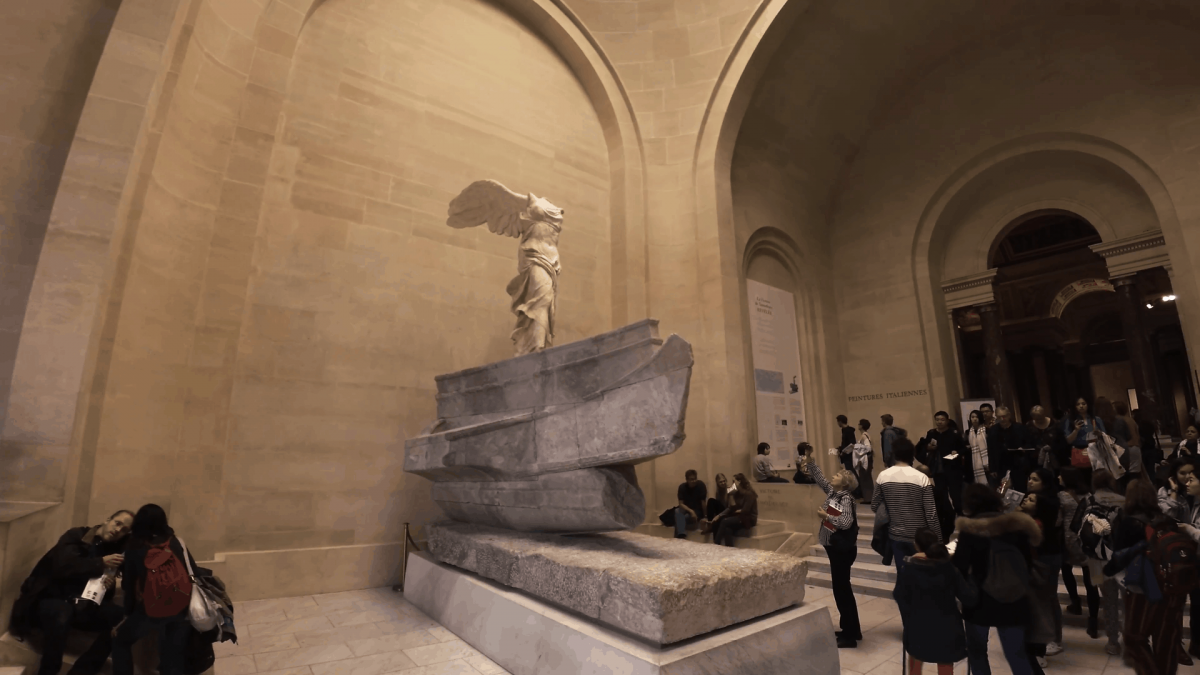Close your eyes for a moment. You’re standing alone in the massive gallery at the Louvre. There, with no one between you and a 500- year old masterpiece but the quiet. Keeping your hands in place, securely behind your back, you lean in to study the colors and textures. Art is integral to the human experience. What would it take to reach out your hand, inch your way closer, cross over the flimsy barrier and steal a moment.
Author and professor Fiona Candlin, is not at all unfamiliar with these secret moments. Spending many years investigating the motivations behind why visitors touch exhibits without permission.
She examines what visitors choose to touch, and how these unauthorized touches make them feel. Consequently, her findings show that this type of rule-breaking is just another part of the museum-going experience. Throughout observation at the British Museum for a report published in The Senses and Society Journal, a security guard told Candlin, “You stop a hundred people touching and there are 200 more … It’s like trying to turn back the sea.”
Closer inspection

Museums are, for the most part, quiet places. Visitors walk quietly from gallery to gallery and contemplate art from a distance. However, Simon Hayhoe, a lecturer at the University of Bath who specializes in art education and disability, suggests that the desire to close that distance is not uncommon. Candlin and Hayhoe both agree that the desire to inspect the authenticity of ancient pieces is a primary goal of those of us – looking to break the rules and reach out.
“There can be a real blur between museums and experiences and theme parks and waxworks. Often if you have really big objects on display. If you think about going into the Egyptian galleries in the British Museum or the Met. Some people can’t believe you would put real things on display without glass around them. They’re not quite sure and they figure if they touch it, they can make an assessment,” Candlin said. “Part of that inspection is to confirm authenticity.
“So there is a sense of power there as well. There is a sense of you are not allowed anywhere near this painting. Because it’s imbued with God, it’s imbued with power, it’s imbued with something you’re never going to be close to.” Candlins’ research illuminates the many reasons why museum visitors succumb to the temptation. One of which is so intrinsic to our need for knowledge.
An emotional connection

Touching is also linked to playing with the art pieces on display. Especially those displays and statues of animals and humans. While these figures aren’t real, museum-goers feel free to push boundaries. It is not unusual to see someone patting the lion head at the Met, or groping naked bottoms of David at the Louvre. Creating a space for modernity and performing for both themselves and the other visitors.
Candlin goes on to say that while breaking the rules and outright grabbing these pieces is not the best way to experience the museum – she does believe touching is important. It is an inevitable part of experiencing art. “People aren’t just touching the ends of their fingers — they’re stroking things, they’re holding things, they’re mimicking,” she continued. “You’ve got to see touching as part of the continuum of ways in which people physically interact with objects.”
“If something is made by a named artist, the museum-goer wants to feel they have some connection with that named artist. Barbara Hepworth put her hand here and I’m now putting my hand here,” Candlin said.”
There is no doubt that simply being in close proximity of artwork evokes an emotional response. However, art is more than just appreciating these masterful techniques. It is an overall sensory experience. There is a human element behind the work. It is not absurd to want to connect to it. That we are tempted to touch other peoples art – is just another part of that experience. We create art for the same reason. Our desire to reach out beyond us and is more than just a spiritual or mental yearning but in a lot of cases – for museum-goers a physical one.